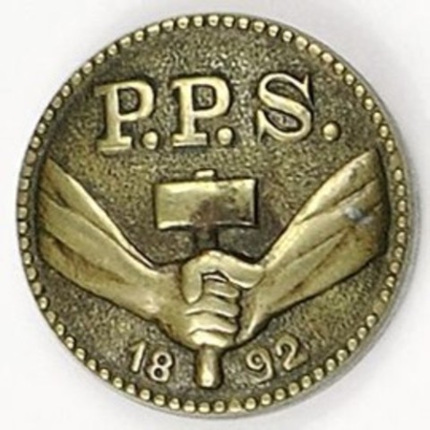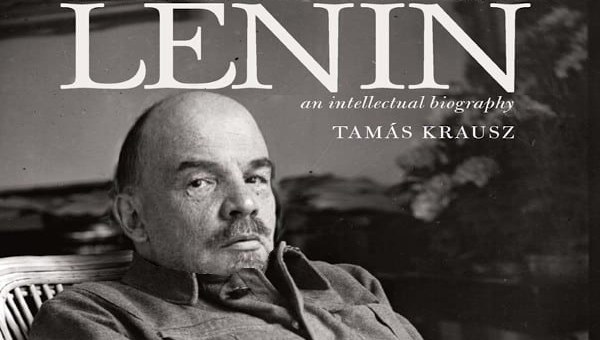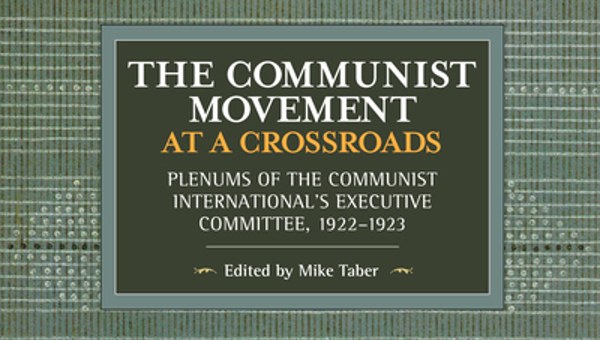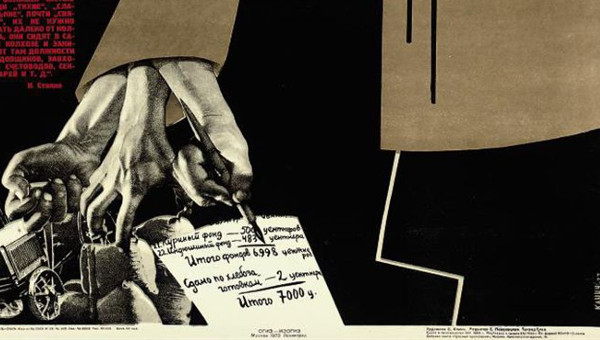A view from the Czarist empire’s borderlands obliges us to rethink many long-held assumptions about the revolutions of 1905 and 1917, as well as the development of Marxist approaches to national liberation, peasant struggle, permanent revolution, and the emancipation of women.

The following paper analyzes the socialist debates on the national question up through 1914. I argue that an effective strategy of anti-colonial Marxism was first put forward by the borderland socialists, not the Bolsheviks. Lenin and his comrades lagged behind the non-Russian Marxists on this crucial issue well into the Civil War – and this political weakness helps explain the Bolshevik failure to build roots among dominated peoples.
Consequently, the Bolsheviks were either too numerically weak and/or indifferent to national aspirations to successfully lead socialist revolutions in the borderlands, facilitating the isolation of the Russian workers’ government and the subsequent rise of Stalinism.
Given that activists today continue to look to the Russian revolution for lessons on how to successfully challenge capitalism, engaging with this history has important implications for contemporary political practice.
Who Were the Borderland Marxists?
Our understanding of the revolutionary movement in Russia remains distorted by the historiographic marginalization of the socialist parties of the empire’s dominated nationalities.[1] As ethnic Russians made up at most 42 per cent of the population, it should come as no surprise that the majority of social democrats (SDs) belonged to the national (non-Russian) parties.[2] In fact, the Mensheviks and Bolsheviks combined only represented about 22 per cent of Marxists in imperial Russia. (See Table 1)
| Table 1: Main Marxist Organizations in the Czarist Empire (1890 to 1914)[3] | ||
|---|---|---|
| Organization | Year Founded | Peak Membership |
| Polish Socialist Party | 1892 | 55,000 |
| Social Democracy of the Kingdom of Poland | 1893 | 40,000 |
| Georgian Social Democracy “Mesame Dasi” | 1893 | 20,000 |
| Lithuanian Social Democratic Party | 1896 | 3,000 |
| General Jewish Labour Bund in Russia and Poland | 1897 | 40,000 |
| Social Democratic Party of Finland | 1899 | 107,000 |
| Revolutionary Ukrainian Party | 1900 | 3,000 |
| Latvian Social Democratic Union | 1903 | 1,000 |
| Armenian Social Democratic Labour Organization “Specifists” | 1903 | 2,000 |
| Bolshevik fraction of the RSDLP | 1903 | 58,000 |
| Menshevik fraction of the RSDLP | 1903 | 27,000 |
| Latvian Social Democratic Labour Party | 1904 | 23,800 |
| Muslim Social Democratic Party “Hummet” | 1904 | 1,000 |
| Ukrainian Social Democratic Union “Spilka” | 1904 | 10,000 |
Yet the national SDs have been neglected by both academic and socialist historiography. For decades, if Western historians mentioned the borderlands, it was usually to portray them as victims of Bolshevik domination.[4] As this interpretation reflected the assumption that Marxism inherently disregards national oppression, the impact and influence of the borderland SDs was conveniently left out. Socialists, both Trotskyist and Stalinist, have similarly dismissed the borderland Marxists, as a serious analysis of their perspectives would disrupt the axiom that the Bolsheviks were consistent and pioneering supporters of national liberation.[5] Typical in this respect is British socialist Alan Woods’ claim that, “without a clear and principled stand on the national question they [the Bolsheviks] could never have led the working-class to the conquest of power.”[6] Each of these interpretations simplifies a much more complicated reality and in the process overlook the periphery’s Marxists.
The First Debates on the National Question
In the early years of the twentieth century, the drive of Iskra (Spark) – a principally Russian and Russified SD faction – to build a centralized revolutionary party across the whole territory put it on a collision course with the non-Russian Marxist parties. Iskra’s organizational plan is often erroneously portrayed as simply a continuation of populist traditions.[7] But, in fact, the People’s Will collaborated as a partner with the Polish Proletariat, the empire’s first Marxist party, and explicitly rejected an organizational merger on the following grounds:
“Respecting the independence and free development of every nation, [the Executive Committee of the People’s Will] recognizes that the differences in social conditions between the Russian and Polish peoples does not allow for identical means in the preparatory work of Russian and Polish socialists. Consequently, the complete merging [of the two parties] would likely inhibit the activities of Russian and Polish socialists, constraining their freedom in selecting the most appropriate methods of organization and struggle.”[8]
The precedent for this approach was further cemented in 1897 when the social democracy of the Austrian empire federated into six national parties.[9] Most SDs in the Czarist borderlands upheld this organizational perspective, as did the Russian Socialist Revolutionaries (SRs).[10] To cite one example, the founding congress of the Latvian Social Democratic Labour Party (LSDSP) called for a federalist Marxist party for the empire, arguing:
“Since the life of every nation is established and develops historically in different economic conditions, since each nation has its own language, its own culture, and differs from others even regarding its class groupings, thus only its own national proletarian social democratic organization can elucidate its proletarian class interests.”[11]
Iskra’s perspective broke from these widespread federalist sentiments and reflected a serious underestimation of the fact that Russia was an empire, not a nation-state. It was particularly problematic given that the labour and socialist movements were much stronger in the periphery than the center up through the 1905 revolution.[12] For instance, the Jewish Bund had recruited 30,000 members by 1903, while Russian SDs had at most a few thousand.[13] While the socialist movement in Central Russia remained weak and atomized at the turn of the century, many borderland SDs had already moved beyond disconnected circles and had built strong parties, centralized on a regional level. Their objections were not to “centralization” as such, but whether this “centralization” should be extended across the empire.[14]
The Bund’s break with the Russian Social Democratic Labour Party (RSDLP) in 1903 expressed not only organizational differences with Iskra, but also important political ones.[15] In the wake of the 1902 Częstochowa pogrom, Lenin dismissed the Bund’s assertion that “anti-Semitism has struck roots in the mass of the workers” as “infantile,” on the grounds that anti-Semitism corresponded to the interests of the bourgeoisie, not the proletariat.[16] Lenin, Trotsky, Martov, and other Iskraists supported legal equality for all, but opposed the Bund’s proposal to explicitly include language equality in the party program.[17] Furthermore, they argued that uncoerced assimilation was the only way to end the oppression of Jews.[18] Latvian LSDSP leader Pēteris Stučka noted that Iskra’s assertion of “the need to assimilate small ethnicities (i.e. the need to Russify)” was shared by Russian officials and liberals, leading him to conclude that “clearly appearing behind the mask of [Marxist] antinationalism is true nationalism.”[19]
Lenin’s general opposition to autonomy and federalism on a governmental level was similarly problematic.[20] At the 1903 congress, he opposed a resolution to support “regional self-government,” arguing that it “might be interpreted to mean that the Social-Democrats wanted to split the whole state up.”[21] Lenin argued that the “disintegration of Russia” called for by the Polish Socialist Party (PPS) “is and will remain an empty phrase, as long as economic development continues to bring the different parts of a political whole more and more closely together.”[22] Though he justified this position with repeated quotations from Europe’s leading Marxist, Karl Kautsky, Lenin’s concrete political proposals were significantly less accommodating to national aspirations.[23] Most significantly, Lenin – unlike both Kautsky and Marx – did not advocate Polish independence.[24] In contrast, Iskra’s predecessors in the populist Land and Freedom had argued that, “it is our duty to promote the break-up of the current Russian empire.”[25]
The tension between Iskra’s sincere support for national equality and a desire to preserve the widest territorial framework possible helps explain its vague, non-committal interpretation of the right of nations to self-determination. This slogan had become part of Marxist “orthodoxy” when it was adopted by the 1896 London congress of the Second International, but its meaning remained unclear. Indeed the extent of the terminological confusion was illustrated in the use of the term “autonomy” in the English and French versions of the 1896 resolution, while the German text referred to “self-determination” (Selbstbestimmungsrecht).[26] Almost all socialists in the Czarist empire – with the notable exception of Rosa Luxemburg and her supporters – supported national self-determination, but how (or if) this concept should be concretized into specific policies sparked heated debate.[27] While Lenin and other Iskraists saw the affirmation of this slogan as politically sufficient, most national SDs argued that it had to be translated into concrete demands for national autonomy, federalism, or independence.

Kazimierz Kelles-Krauz (1872-1905).
The latter case was articulated in numerous pamphlets and articles by socialists in the borderlands, which surpassed the approach of their Russian comrades both theoretically and politically. One of the more path-breaking efforts was that of Kazimierz Kelles-Krauz, the main Marxist theoretician of the Polish PPS, to formulate a strategy rooting national liberation in proletarian struggle. While advocating collaboration with Russian socialists in the fight to overthrow the Czar, he called for the break-up of the empire, arguing that even a constitutional Russia would not end the oppression of non-Russians.[28] Unlike the Iskraists, Kelles-Krauz distinguished between the progressive “defensive and oppressed” nationalism of the Poles and the “offensive and oppressive” nationalism of the Russians.[29] Yet far from advocating class collaboration, he argued that independence could only be won through the self-organization and mobilization of the proletariat given that the native bourgeoisie, fearing its workers, had ceased to fight for political democracy.[30] “An independent Poland for the sake of the proletariat, not the proletariat for the sake of Polish independence,” was his motto.[31]
In a period when socialism remained a distant, hazy goal for many SDs, Kelles-Krauz was the first Marxist in the 20th century to directly tie the fight for national liberation to socialist revolution as an immediate task. (In contrast, Trotsky’s famous 1906 theorization of permanent revolution was entirely silent on the struggles of oppressed peoples for self-determination.)[32] In 1902 Kelles-Krauz wrote, “our sacred duty – in every city, in every neighborhood where the Tsarist army and authorities are forced out – will be to immediately proclaim a socialist republic” in which all the major industries will become “property of the nation.”[33] Whether the Polish revolution will progress toward “the dictatorship of the proletariat” or whether the “social gains of the uprising” will be “partially undone” through a return of the private ownership of the means of production, he argued, “definitely cannot be predicted” as this “to a considerable extent depends” on the dynamic of the revolutionary struggle in the West.[34]
Such a case was not completely unprecedented among Polish socialists. As early as 1891, the National Socialist Commune had declared that:
“Political revolution, aimed to liberate Poland from foreign yoke, and social revolution, aimed to liberate the Polish proletariat from economic oppression, must be accomplished simultaneously. As the first cannot be effective without the other, so too is the second impossible without the first.”[35]
The first empire-wide organization in this period to argue that the Russian revolution should immediately overthrow capitalism was also to a significant extent the product of the borderlands. The Socialist-Revolutionary Maximalists – born in 1904 and based out of Białystok, a predominantly Jewish city in the empire’s Northwest – called for the immediate creation of a “Workers’ Republic”: i.e. the “seizure of power by the working people in town and country” and the expropriation of the factories, mines, and landlords’ estates “for the public good.” Such a revolution would lead to a “global revolt of labour against capital,” which is why the “workers of the West” looked to the proletariat of Russia and the “world bourgeoisie” feared and hated it.[36] On the national question, the SR-Maximalists supported federalism, decentralization, and the right to secede, though, like many SRs, they stressed the “All-Russian” struggle more than national liberation per se.[37]
The 1905 Revolution in the Borderlands
While a detailed analysis of 1905 goes beyond the scope of this paper, the particularly explosive mix of national and social discontent in the borderlands should be highlighted. In fact, the revolution advanced much further – and the influence of Marxists was far greater – in the periphery than the center, underscoring the gravity of the Bolsheviks’ failure to build a base beyond ethnic Russians.[38]
In Baku, the Hummet, the world’s first socialist party of and for a Muslim population, led Azeri and Persian oil and fishery workers in militant strikes and went on to play a leading role in the revolution that overthrew the Shah of Iran in 1909. The fascinating history of the Hummet refutes the common assumption that Muslim people have historically been impervious to socialist ideas. It also contradicts the Bolsheviks’ argument that Marxist parties of specific national groups like the Hummet or the Bund (as distinct from multi-ethnic territorial organizations) were inherently obstacles in the fight to unite the working-class. In fact, Hummetists played a key role in building (an often tenuous) unity between Muslim labourers and their Armenian or Russian co-workers, and the Bolsheviks’ short-lived influence among Muslim workers in 1906-1908 coincided with their collaboration with, and participation within, the Hummet.[39]
In Finland, the Social Democratic Party, in conjunction with the Federation of Working Women, led massive demonstrations and strikes that successfully restored the autonomy of Finland and transformed it into the world’s first national polity with full women’s suffrage. Decades before theorizations of “intersectionality” arose among U.S. feminists, Finnish socialists simultaneously fought for women’s rights, the end of national oppression, and the elimination of class exploitation. As pointed out by Hilja Pärssinen – a central leader of Finland’s socialist and working women’s movement and a close collaborator of both Clara Zetkin and Alexandra Kollontai – Finnish women were able to win suffrage under socialist leadership largely because of their key role in the national struggle against Russification begun in 1899 and the general strike in the 1905 revolution.[40]
Poland witnessed the empire’s most militant labour movement, manifest in the June Lodz insurrection and the establishment of workers’ rule in the mining regions in late 1905.[41] Most dramatic of all were the events in Georgia and Latvia, where SDs led massive upheavals of workers, peasants, and farmworkers, culminating in the seizure of power in much of the countryside and many smaller towns by the end of the year.[42]
The depth and radicalism of 1905 in the borderlands challenges key historiographic myths, such as the idea that the Bolsheviks were the first Marxists to take seriously the revolutionary potential of the peasantry. In fact, the hegemony of the Georgian and Latvian SDs in the rural revolution went further than even the Russian SRs; in contrast, the Bolsheviks had no significant mass influence among peasants or farm workers anytime before 1917. Both the Georgian SDs and the Spilka – which played a leading role, though to a somewhat lesser extent, in the Ukrainian countryside – supported the Menshevik demand for land “municipalization.” On my reading of the evidence, however, the success of these parties in the agrarian revolution was less the result of their official planks (the Latvian SDs did not even have a formal agrarian program) and more the fruit of a commitment to organize in the countryside and a flexible, non-dogmatic articulation of local demands.[43]
The upheavals in the periphery furthermore challenge the historiographic consensus that the revolution’s defeat was the inevitable result of the Czarist government’s superior military force. Trotsky, for instance, argued that, “the Russian proletariat in December 1905 foundered, not on its own mistakes, but on a more real force: the bayonets of the peasant army.”[44] As I will demonstrate in detail in my forthcoming monograph, this interpretation is contradicted by significant historical evidence and is premised on an untenable dismissal of the “subjective factor” of revolutionary leadership.
In late October and November 1905 the autocracy was largely paralyzed and could likely have been overthrown. The Czar’s declaration of the “October Manifesto” had sparked widespread army mutinies, particularly (but not exclusively) in the borderlands, yet the SD and SR organizations in all the major cities of the empire failed to take any serious steps to organize an armed uprising or even call mass demonstrations to challenge and attempt to win over the troops. As one participant in the Latvian events recalled, “it would have been possible” to have “even the troops on your side,” but “the moment was missed.”[45] The failure of the revolutionaries to strike while the iron was hot allowed the regime to eventually retake the initiative, reestablish some discipline in the army, and arrest the St. Petersburg Soviet leaders. The government’s initiative provoked uncoordinated street-fighting in December in Moscow, the major city of the empire whose socialists were least prepared for an uprising; in turn, the crushing of the Moscow fighting demoralized the insurrectionary movement across the empire and the revolution was lost.
In the wake of 1905, a desire for closer socialist collaboration led to the unification of the Jewish Bund, Polish SDKPiL, and Latvian LSDSP with the RSDLP. The new party was in practice more federalist than centralist, as the national organizations kept their distinct organizations, leaderships, and policies intact. Underlying differences between the organizations were brushed aside rather than resolved. Thus the 1906 unification congress affirmed the principle of centralization at the same time as it sanctioned the preservation of distinct policies and organizational structures for the borderland Marxists, even when contradictory with the RSDLP program as a whole. For example, the adopted unification agreement with the Bund accepted that it was “a social-democratic organization of the Jewish proletariat … not limited in its activities by a regional framework,” while simultaneously affirming the RSDLP’s general opposition to non-territorial party organizations.[46]
The Bolsheviks accommodated themselves to this looser framework as the national SDs, generally to the left of the Mensheviks, were key allies in the internal factional fights. Yet the Bolsheviks’ ethnic base remained narrow – 78 per cent of their delegates to the 1907 RSDLP congress were Russians.[47] Just as problematically, they refrained from updating their national program and opposed even opening a discussion on this topic at the 1907 congress.[48] For all their claims to “orthodoxy,” Lenin and his comrades still lagged behind Kautsky, who in 1905 explicitly called for Russia to be transformed into “a federal state, the ‘United States of Russia.’”[49] Given the Bolsheviks’ continued hostility to federalism, it is not surprising that the Bund was the first to publish Kautsky’s article in Russian.[50]
The Prewar Debates
It was only after 1912 that Lenin and some of his comrades began to rethink their national policies, as factional developments pushed the question back to the center of debates. Most national SD parties, particularly among the rank-and-file, rejected the reformism of the Menshevik liquidators and continued to uphold “non-factional” revolutionary Marxism.[51] Yet none of these organizations participated in the 1912 Prague conference of Bolsheviks and Party-Mensheviks which broke from the liquidators.[52] Several months later, the Vienna “August Bloc” conference led by the main borderland Marxists, Trotsky, and the Mensheviks resolved that national-cultural autonomy (the demand for the establishment of autonomous cultural institutions for all nationalities, regardless of territory) was not in contradiction with the party program.[53]
In response to these developments, Lenin enlisted the relatively few borderland Bolshevik cadre, including the Georgian Joseph Stalin, to write on the national question as part of a political counter-offensive.[54] In 1913 and 1914, Lenin published his first theoretical pieces on this topic, directed against supporters of national-cultural autonomy – who, by this time, included most national SDs – and the Luxemburgists.[55] Lenin’s prewar pieces were an important advance in various respects. After two decades of relative neglect, emphasizing the importance of the national question was a major shift, as was his new support for regional autonomy, promotion of language rights, and stress on combating Russian chauvinism.[56] But political weaknesses – combined with the fact that Lenin’s new positions were far from accepted by all of his comrades – continued to undermine the Bolsheviks’ attempts to broaden their base.[57] Three issues stand out in particular.
“National differences and antagonism between peoples are daily more and more vanishing, owing to the development of the bourgeoisie, to freedom of commerce, to the world market, to uniformity in the mode of production and in the conditions of life corresponding thereto.”
First, Bolshevik writings of this period are based on the perspective that “developed capitalism” systematically dissolves national divisions. Stalin approvingly cited The Communist Manifesto‘s claim that “national differences and antagonisms between peoples are daily more and more vanishing.”[58] Lenin similarly emphasized:
“Capitalism’s world-historical tendency to break down national barriers, obliterate national distinctions, and to assimilate nations – a tendency which manifests itself more and more powerfully with every passing decade, and is one of the greatest driving forces transforming capitalism into socialism.”[59]
On this basis, Lenin argued that the ongoing assimilation of Ukrainian workers in Czarist Russia was an “undoubtedly progressive” feature of capitalist growth.[60] While acknowledging that the creation of a Ukrainian state was a historic possibility, Lenin at the same time concluded that, “the historically progressive nature of the ‘assimilation’ of the Great-Russian and Ukrainian workers will be as undoubted as the progressive nature of the grinding down of nations in America.”[61]
Linked to this analysis, Lenin and Stalin denounced the fight to defend the national cultures of dominated peoples as a reactionary manifestation of bourgeois nationalism.[62] Even the Bolsheviks’ allies in the Latvian LSDSP – the only borderland organization to eventually side with the Bolsheviks in these years – cut out all of Lenin’s formulations on the national question from the draft program he wrote for their 1914 congress.[63]
Given that the historiography of the pre-war debates on the national question usually focuses on support or opposition to Austro-Marxist Otto Bauer’s theories, it is important to stress that the most important contributions from the Czarist borderlands forged a distinct orientation. Unlike both Bauer and the Bolsheviks, many national SDs tended to emphasize the need to combine territorial and extra-territorial national solutions. The Bolsheviks’ claim that capitalism dissolved national divisions was generally rejected, as was Bauer’s perspective that nations were permanent entities that would be further cemented by the advent of socialism.[64]
The Bolsheviks’ second major weak point was the reversal of their post-1905 accommodation to the de-facto federal status of the national SD organizations. Reverting to denunciations of organizational federalism, Lenin at one point even argued that the non-Russian SDs were not an essential component of an empire-wide party: “Is an ‘All-Russia’ S.D.L.P. legitimate without the non-Russian nationalities? It is, because it was an All-Russia party from 1898 to 1903 without the Poles and Letts, and from 1903 to 1906 without the Poles, Letts and the Bund!”[65]
Third, Lenin continued to oppose state federalism, affirming that big states were progressive and should only be broken up an as exception.[66] He wrote:
“Marxists will never, under any circumstances, advocate either the federal principle or decentralization. The great centralized state is a tremendous historical step forward from medieval disunity to the future socialist unity of the whole world, and only via such a state (inseparably connected with capitalism), can there be any road to socialism.”[67]
This stance, sidestepping the difference between an empire and a nation-state, significantly undercut the thrust of his definition of self-determination as the right to political secession.[68] Ukrainian SD leader Lev Yurkevich replied that generalized support for big states and the right of nations to self-determination were “mutually exclusive principles.”[69] On the crucial question of Polish independence, Lenin argued that:
“No Russian Marxist has ever thought of blaming the Polish Social-Democrats for being opposed to the secession of Poland. These Social-Democrats err only when, like Rosa Luxemburg, they try to deny the necessity of including the recognition of the right to self-determination in the Programme of the Russian Marxists.”[70]
This approach was concretized in the Bolsheviks’ continued alliance with Luxemburgists instead of the far healthier PPS-Left (the name was adopted after the PPS majority expelled its nationalist wing in 1906-1907), which was leading a resurgent mass workers’ movement.[71] Yet the Bolsheviks unjustifiably denounced the latter as “nationalists” and built an alliance with a wing of SDKPiL militants (Karl Radek, etc.) who opposed the sectarianism and anti-democratic impositions of the émigré Rosa Luxemburg-Leo Jogiches leadership, while still supporting their perspective on the national question.[72] The Bolsheviks’ approach to Poland – and national liberation more generally – helps explain why their support in the borderlands was largely limited to anti-patriotic SDs.[73]
Conclusion
Despite their desire to build a party representing all workers of the empire, the Bolsheviks’ roots among non-Russians – and their policies toward them – were remarkably weak on the eve of 1917.[74] While this was certainly not the sole cause of the revolution’s defeat outside Central Russia, it was an important factor. The Bolsheviks were too isolated to make a serious bid for power in Georgia, which declared its independence.[75] Similarly, in Finland the Bolsheviks had little influence over the course of the revolution, which was crushed by 1918.[76] In Ukraine and Azerbaijan, soviet governments were established with virtually no native support and were soon driven from power.[77] These failures facilitated a prolonged and devastating Civil War that took place principally in the borderlands.[78] Sovietization was eventually established in Georgia, Azerbaijan, and Ukraine in large measure through intervention by the Red Army, but the 1920 Red Army invasion of Poland catastrophically backfired.[79]
It should be underscored that Europe’s leading Marxists, without exception, had for many decades seen the non-Russian regions of the Czarist empire as central to the international expansion of revolution.[80] The importance of Poland – occupied jointly by Germany (Prussia), Austria, and Russia – in particular was a longstanding theme. As Kautsky wrote in 1904:
“The Polish question will also become acute again … The Poles will point their bayonets not against Russia but against Austria and Prussia, and to the extent that Poland serves the revolution, it will become a means not to defend the revolution against Russia but to carry it to Austria and Prussia. … Couldn’t those struggles possibly result in the rule of the proletariat in Germany? That, however, would have repercussions on the whole of Europe.”[81]
Yet the opposite dynamic took place: defeats in the borderlands, particularly the failure of the revolution in Poland, were key turning points in the post-war revolutionary wave.[82] By the end of 1923, the Soviet government found itself stranded in a hostile capitalist world.
The experience of these setbacks, efforts to build soviet power among non-Russians, and the influx of borderland SDs and revolutionary nationalists into the Communist Parties and the Comintern, brought about a major revision of the Bolshevik approach to the national question. Many of the positions first advocated by borderland SDs were adopted, including support for state federalism and/or independent socialist republics in the borderlands; the rejection of assimilation and the active promotion of national culture and national schools; and the establishment of separate borderland Marxist parties.[83] These new policies made possible a remarkable “national renaissance” of non-Russians that lasted until the Stalinist counter-revolution in the 1930’s.[84]
In short, the Bolsheviks as a whole overcame serious weaknesses concerning the national question only after the initial defeats of the workers’ revolutions in the empire’s periphery. Lenin and his comrades eventually adopted much of the approach of the national SDs, but their delay in doing so cost the revolution dearly. Had the Bolsheviks adopted this orientation at an earlier date, it might have been possible for the socialist revolution to have succeeded in the non-Russian territories and, from there, to have advanced across Europe and Asia. While the historical record supports Trotsky’s contention that the rise of Stalinism was fundamentally caused by the isolation of the revolution, the evidence suggests that this isolation was to a significant extent the fruit of Bolshevik political weaknesses on and in the borderlands.
Furthermore, a contributing factor in the Stalinist bureaucracy’s defeat of the Left Opposition was the latter’s failure to champion the demands of non-Russians. In 1923, Trotsky famously failed to follow through on Lenin’s plea that he go on the offensive against Stalin concerning the autonomy of Georgia. That same year, Trotsky likewise rejected the proposal for an alliance against Stalin made to him by Mirsaid Sultan Galiev – the Bolsheviks’ main leader among Muslim people, who had organized a broad resistance movement against Russian domination in the borderlands. In subsequent years, the numerous non-Russian opponents of Stalin (with the exception of the Georgian Communists) generally did not see the Left Opposition as an ally, because Luxemburgists such as Georgy Pyatakov were prominent leaders within it, and because it made no mention of the national question until 1927.[85]
Learning from this experience – and that of borderland Marxism more generally – may be of considerable value for sharpening socialist practice in today’s struggles against class, national, and gender domination. •
Originally published on the johnriddell.wordpress.com website.





